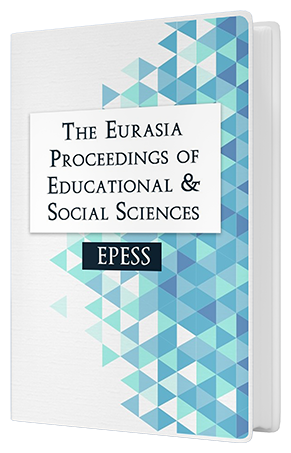Fostering Students in Learning English through Creativity in Making Advertisement
DOI:
https://doi.org/10.55549/epess.849Keywords:
Advertisement, Creativity, English learning, PBLAbstract
Creativity is an essential element in the current research trend for those of us living in the era of Society 5.0 revolution. In this digital age where technology is rapidly advancing and global competition demands proficiency in the English language as a tool for international communication, advertising through Project Based Learning (PBL) approach is a simple yet effective catalyst that can change the current paradigm of English language learning in classrooms, which tend to still employ traditional styles in some areas lacking supportive facilities. This research was conducted on one of the northernmost islands in Indonesia, specifically at SMP Negeri 1 Tahuna, Tahuna District, Sangihe Islands Regency, North Sulawesi Province. The study uses a qualitative method in which the researcher analyzes the effective use of materials related to advertisements, combined with the use of Canva media by students, thereby encouraging active student engagement in learning English. The research was applied to classes IXA – IXD, which have implemented Emancipated Curriculum as the national curriculum in Indonesia. Class IXA consists of 30 students, IXB has 31 students, IXC has 32 students, and IXD has 32 students, making a total of 125 students in class IX (54 male students and 71 female students). This certainly serves as a benchmark that simple materials, with the application of methods and technological touches, can access students' developmental levels in learning English, enabling them to foster not only skills but also their creativity. This approach can also be applied by teachers in other schools so that its implementation can be accessed comprehensively and effectively.
Downloads
Published
How to Cite
Issue
Section
License
Copyright (c) 2024 The Eurasia Proceedings of Educational and Social Sciences

This work is licensed under a Creative Commons Attribution 4.0 International License.
The articles may be used for research, teaching, and private study purposes. Any substantial or systematic reproduction, redistribution, reselling, loan, sub-licensing, systematic supply, or distribution in any form to anyone is expressly forbidden. Authors alone are responsible for the contents of their articles. The journal owns the copyright of the articles. The publisher shall not be liable for any loss, actions, claims, proceedings, demand, or costs or damages whatsoever or howsoever caused arising directly or indirectly in connection with or arising out of the use of the research material. All authors are requested to disclose any actual or potential conflict of interest including any financial, personal or other relationships with other people or organizations regarding the submitted work.




